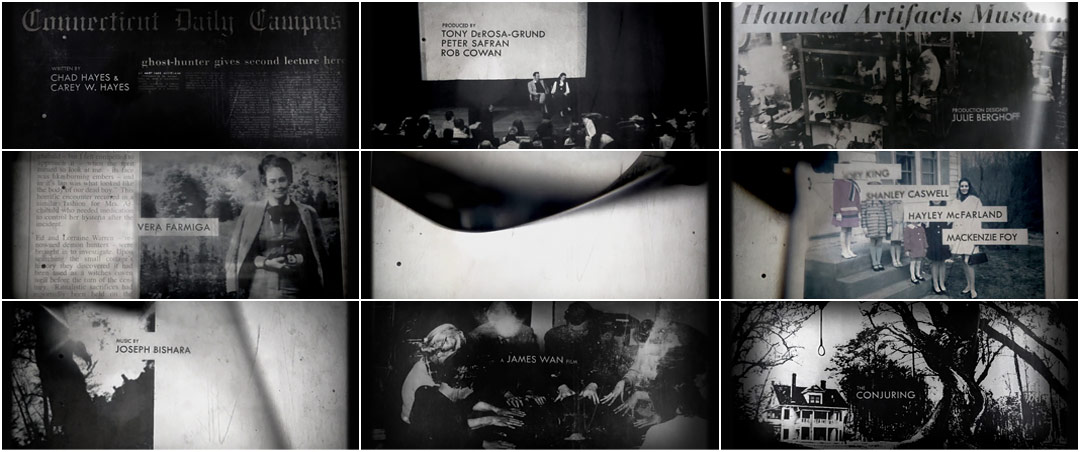
The text is skinny and all in capitals, possibly a Calibri font. The font appears in both black and white and is shown over old photos and newspaper articles. All of the titles are shown over a projector that lights them up, giving us a clearer image. The images shown are also in black and white. Each title either fades in and out or is placed onto the projector, one on top of the other. Some of the titles are obvious but others look as if they are part of the background text already shown. The whole title sequence has a worn out effect and scratches on the projector and some individual slides.


